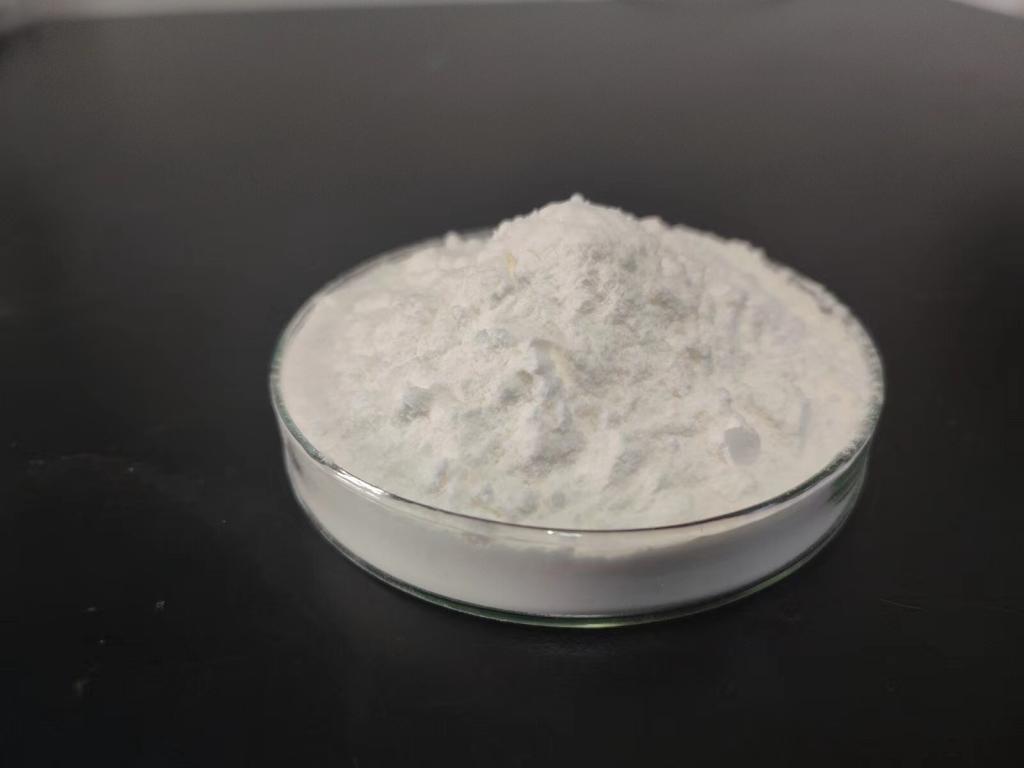Tel:0086 18231198596

News
Current Position:
Home >
News
>ε-Polylysine Hydrochloride: An Eco-Friendly Approach to Pest Management.
ε-Polylysine Hydrochloride: An Eco-Friendly Approach to Pest Management.
TIME:2024-06-06
Understanding ε-Polylysine Hydrochloride
ε-Polylysine hydrochloride is a polycationic peptide composed of lysine residues linked by peptide bonds through their ε-amino groups. Produced by strains of Streptomyces albulus, ε-PL is widely recognized for its antimicrobial properties and is used as a food preservative. Its natural origin and biodegradability make it an attractive candidate for pest management applications.
Mechanisms of Pest Control
The efficacy of ε-PL in pest management is attributed to several mechanisms:
Antimicrobial Activity:
ε-PL disrupts microbial cell membranes, leading to cell lysis and death. This broad-spectrum activity targets bacteria, fungi, and viruses, which are often associated with plant diseases and pest infestations.
Insecticidal Effects:
Preliminary studies indicate that ε-PL can also affect certain insect pests by disrupting their gut microbiota or directly impacting their physiology. This dual action enhances its potential as a pest control agent.
Biofilm Disruption:
ε-PL's ability to penetrate and disrupt biofilms can help control pests that rely on microbial biofilms for protection and nutrient supply.
Applications in Agriculture
The potential applications of ε-PL in agriculture are diverse, ranging from crop protection to post-harvest pest management:
Crop Protection:
ε-PL can be used to protect crops from bacterial and fungal pathogens that cause significant yield losses. Its application as a foliar spray or soil treatment can help control diseases such as bacterial blight, powdery mildew, and root rot.
Seed Treatment:
Treating seeds with ε-PL can protect against seed-borne pathogens, enhancing germination rates and seedling vigor. This application is particularly valuable for organic farming, where chemical seed treatments are restricted.
Soil Health Improvement:
By controlling soil-borne pathogens, ε-PL can contribute to improved soil health and fertility. It can be integrated into soil management practices to suppress harmful microbes while promoting beneficial microbial communities.
Post-Harvest Pest Management:
ε-PL can be used to prevent post-harvest losses caused by microbial spoilage and insect infestations. Treating harvested produce with ε-PL can extend shelf life and maintain quality during storage and transportation.
Advantages of ε-Polylysine Hydrochloride
ε-PL offers several advantages over traditional chemical pesticides, making it an eco-friendly option for pest management:
Non-Toxicity:
ε-PL is derived from natural sources and has been extensively studied for its safety. It is non-toxic to humans, animals, and beneficial insects, reducing the risk of adverse health effects and ecological imbalances.
Biodegradability:
As a biodegradable compound, ε-PL does not persist in the environment, minimizing the risk of soil and water contamination. Its degradation products are harmless, further enhancing its environmental compatibility.
Broad-Spectrum Activity:
ε-PL's broad-spectrum antimicrobial activity allows it to target a wide range of pests, including bacteria, fungi, and some insects. This versatility reduces the need for multiple pest control agents, simplifying pest management strategies.
Resistance Management:
The unique mode of action of ε-PL can help manage resistance development in pest populations. By integrating ε-PL with other pest control methods, it is possible to achieve sustainable and effective pest management.
Regulatory Status and Approval
The regulatory status of ε-PL varies by region, but its approval as a food preservative in several countries highlights its safety and efficacy. In agriculture, ε-PL is considered a biopesticide, and regulatory approval for such uses involves rigorous safety and environmental assessments. The U.S. Environmental Protection Agency (EPA) and other regulatory bodies evaluate biopesticides to ensure they meet safety standards for human health and the environment.
Case Studies and Success Stories
Several studies and practical applications demonstrate the effectiveness of ε-PL in pest management:
Control of Plant Pathogens:
Research has shown that ε-PL effectively controls bacterial blight in rice and bacterial wilt in tomatoes, significantly reducing disease incidence and improving crop yield.
Post-Harvest Preservation:
In post-harvest applications, ε-PL has been used to prevent spoilage in fruits and vegetables, extending shelf life and reducing food waste. Its application in citrus fruits, for instance, has shown positive results in controlling fungal pathogens such as Penicillium spp.
Seed Treatment Efficacy:
Studies on seed treatment with ε-PL have demonstrated improved germination rates and seedling health in crops like wheat and soybeans, highlighting its potential for enhancing crop productivity.
Challenges and Future Directions
While ε-PL shows great promise in eco-friendly pest management, several challenges and areas for future research remain:
Cost-Effectiveness:
The production and application costs of ε-PL need to be optimized to make it economically viable for widespread agricultural use. Research into cost-effective production methods and delivery systems is essential.
Comprehensive Field Studies:
More extensive field trials are needed to evaluate the long-term efficacy and environmental impact of ε-PL in diverse agricultural settings. These studies will help refine application protocols and establish best practices.
Integration with Integrated Pest Management (IPM):
Incorporating ε-PL into Integrated Pest Management (IPM) strategies can enhance its effectiveness and sustainability. IPM combines biological, cultural, and chemical methods to manage pests in an environmentally and economically sustainable manner.
Regulatory Harmonization:
Harmonizing regulatory standards for biopesticides like ε-PL across different regions can facilitate its adoption and use in global agriculture. Collaborative efforts between regulatory agencies, researchers, and industry stakeholders are crucial for achieving this goal.
Conclusion
ε-Polylysine hydrochloride represents an eco-friendly and sustainable approach to pest management, offering a non-toxic alternative to traditional chemical pesticides. Its broad-spectrum antimicrobial activity, biodegradability, and safety profile make it an ideal candidate for various agricultural applications, from crop protection to post-harvest preservation. As research and development continue, ε-PL has the potential to play a significant role in promoting sustainable agriculture and reducing the environmental impact of pest management practices. By integrating ε-PL into holistic pest management strategies, we can move towards a more sustainable and resilient agricultural system that benefits both farmers and the environment.

 CONTACT
CONTACT




